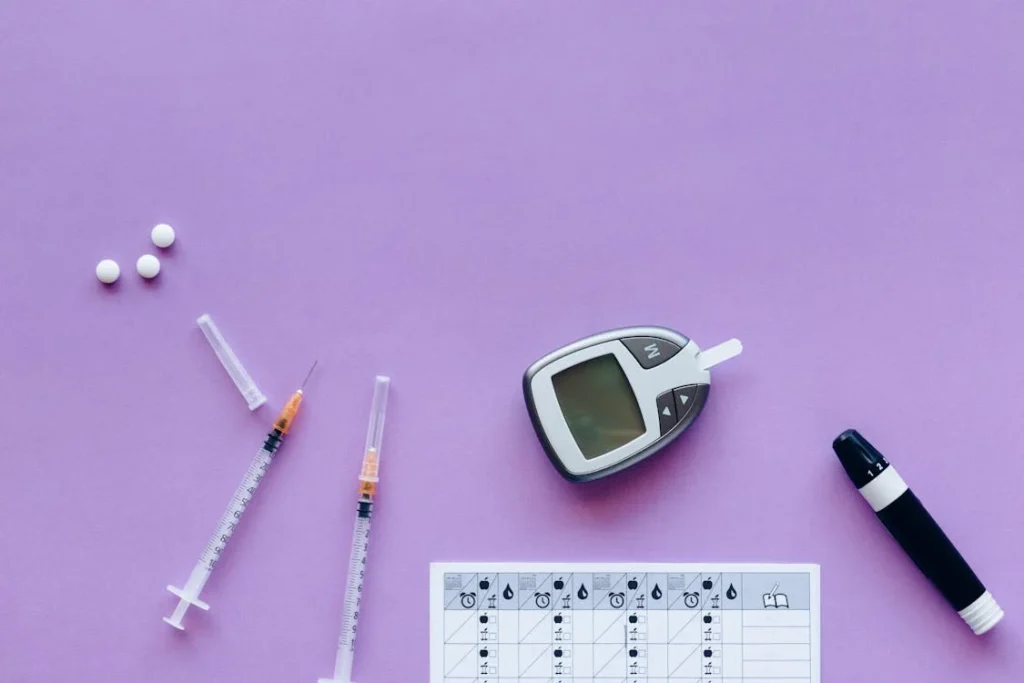Diabetes is one of the leading causes of limb loss, and managing both conditions together can be challenging. When blood sugar levels are not controlled, they can lead to poor circulation, nerve damage, and slow healing, making life with a prosthetic limb even more difficult. However, with the right nutrition and health habits, amputees with diabetes can improve their overall well-being, prevent complications, and lead an active life.
A well-balanced diet plays a key role in keeping blood sugar stable, maintaining muscle strength, and promoting wound healing. Exercise, hydration, and proper prosthetic care also contribute to better mobility and comfort. Small, consistent changes in daily habits can make a big difference in managing both diabetes and limb loss.
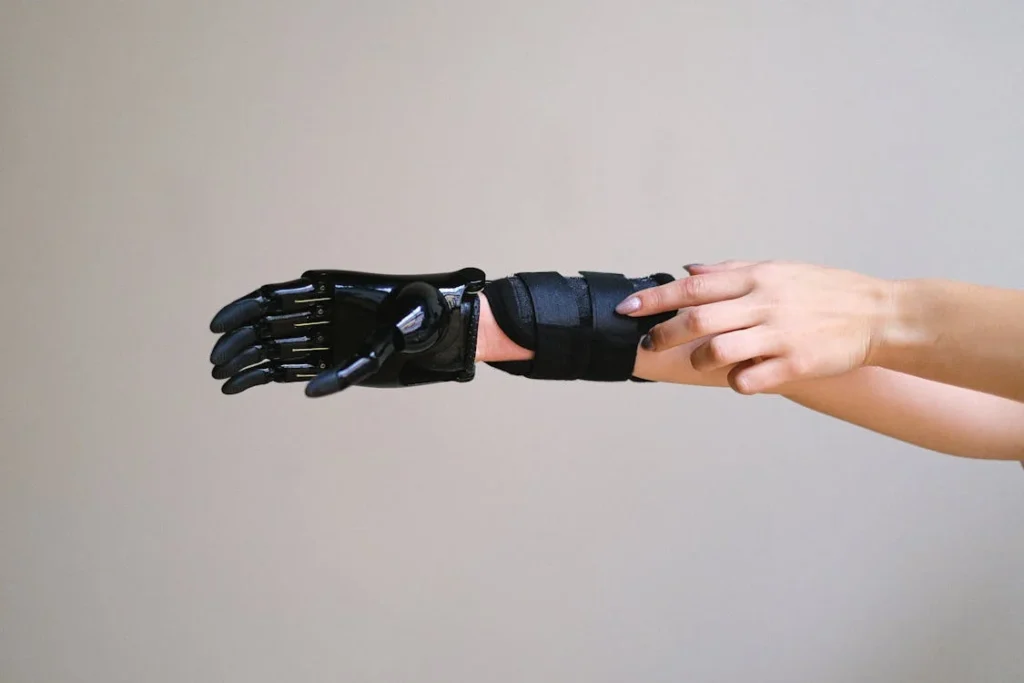
The Connection Between Diabetes and Limb Loss
Diabetes affects the body in many ways, but one of the most serious complications is poor circulation and nerve damage. Over time, high blood sugar levels damage blood vessels, reducing the flow of oxygen and nutrients to the limbs.
This makes it harder for wounds to heal, increasing the risk of infections. In severe cases, untreated infections can lead to gangrene, leaving amputation as the only option to prevent further damage.
Losing a limb due to diabetes comes with unique challenges. The body has to adjust to new ways of moving, balancing, and performing daily tasks.
For those using a prosthetic limb, the residual limb requires extra care to prevent sores and infections. Since diabetes slows down healing, even small cuts or blisters in the residual limb can become serious if not managed properly.
How Blood Sugar Affects Healing and Mobility
Controlling blood sugar levels is one of the most important aspects of managing diabetes after an amputation. High blood sugar weakens the immune system, making it harder for the body to fight infections. I
t also affects the production of collagen, a protein that helps wounds heal. For an amputee, this means that any irritation or injury on the residual limb can take much longer to recover, increasing the risk of complications.
Unstable blood sugar levels can also lead to fluctuating energy levels, affecting mobility and comfort when using a prosthetic. When blood sugar is too high or too low, it can cause fatigue, dizziness, and muscle weakness, making it difficult to stay active.
Maintaining a stable blood sugar level through proper nutrition helps the body function more efficiently and supports overall strength.
The Role of Circulation in Prosthetic Comfort
Good circulation is essential for keeping the residual limb healthy. When blood flow is restricted, the skin and tissues receive less oxygen, making them more prone to damage.
This can lead to pressure sores, pain, and discomfort while wearing a prosthetic. Poor circulation also increases swelling, which can make it difficult to get a proper fit with a prosthetic socket.
Simple habits like moving regularly, massaging the residual limb, and wearing properly fitted prosthetics can improve blood flow. Staying hydrated and following a heart-healthy diet also helps maintain good circulation, reducing the risk of complications.
Managing diabetes effectively ensures that the body continues to deliver oxygen and nutrients to the areas that need them most.

Nutrition for Managing Diabetes and Supporting Limb Health
A well-balanced diet is one of the most powerful tools for managing diabetes and supporting overall health after limb loss. The right foods help keep blood sugar stable, promote wound healing, and strengthen muscles, making it easier to adapt to a prosthetic limb.
Eating the right way doesn’t have to be complicated—it’s about making smart choices and developing habits that support long-term well-being.
The Importance of Blood Sugar Control Through Diet
Every meal and snack affects blood sugar levels. Foods high in refined sugars and simple carbohydrates cause blood sugar to spike quickly, leading to energy crashes and increased inflammation.
Over time, this can make it harder for the body to heal wounds and fight infections. Instead, focusing on fiber-rich foods, lean proteins, and healthy fats can help maintain stable blood sugar levels throughout the day.
Fiber slows down the absorption of sugar in the bloodstream, preventing spikes and crashes. Foods like whole grains, legumes, and vegetables provide a steady source of energy while also supporting digestion.
Protein helps build and repair tissues, which is especially important for amputees as their bodies adjust to new physical demands. Good sources of protein include fish, eggs, nuts, and lean meats.
Healthy fats, such as those found in olive oil, avocados, and nuts, reduce inflammation and support overall metabolic health.
How Nutrition Supports Wound Healing and Skin Health
For amputees, keeping the residual limb healthy is a top priority. Any cuts, blisters, or irritation from a prosthetic can turn into serious infections if they do not heal properly. Certain nutrients play a crucial role in speeding up the healing process and strengthening the skin.
Vitamin C helps produce collagen, a key protein that supports skin elasticity and wound healing. Citrus fruits, bell peppers, and leafy greens are excellent sources.
Zinc also plays an important role in tissue repair and immune function, helping the body fight off infections more effectively. Foods like nuts, seeds, and lean meats provide a good supply of zinc.
Staying hydrated is equally important. Dehydration can make the skin dry and fragile, increasing the risk of irritation and pressure sores.
Drinking enough water throughout the day keeps the skin flexible and resilient, reducing discomfort when wearing a prosthetic. Herbal teas and water-rich foods like cucumbers and watermelon can also contribute to hydration.
Reducing Inflammation for Better Circulation and Mobility
Inflammation is a major concern for people with diabetes, as it can slow down healing and cause discomfort. A diet high in processed foods, sugary snacks, and fried foods can increase inflammation, making it harder to manage blood sugar and maintain good circulation.
On the other hand, anti-inflammatory foods can help improve overall health and reduce pain or swelling.
Omega-3 fatty acids, found in fish like salmon and flaxseeds, have natural anti-inflammatory properties. Turmeric, ginger, and green leafy vegetables also help lower inflammation, improving blood flow and reducing the risk of pressure sores on the residual limb.
Adding these foods to daily meals can make a noticeable difference in comfort and mobility.
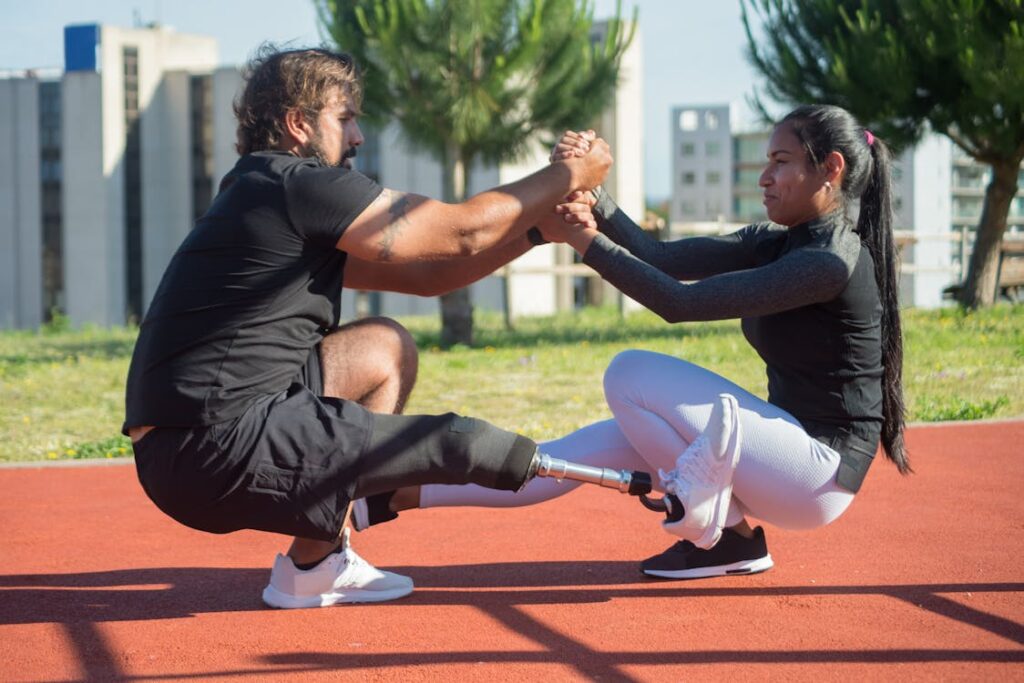
Exercise and Physical Activity for Diabetes and Limb Loss Management
Staying active is one of the best ways to manage diabetes and improve overall health after limb loss. Exercise helps regulate blood sugar levels, improves circulation, strengthens muscles, and enhances mobility with a prosthetic limb.
While it may seem challenging at first, the right exercises can make daily movement easier and reduce the risk of complications related to both diabetes and amputation.
How Exercise Helps Control Blood Sugar
When you move, your muscles use glucose for energy, which helps lower blood sugar levels naturally. Regular physical activity also makes the body more sensitive to insulin, allowing it to use blood sugar more efficiently.
For people with diabetes, this means fewer spikes and crashes, leading to more stable energy levels throughout the day.
Exercise doesn’t have to be intense to be effective. Even simple movements like walking, stretching, or practicing balance exercises can improve blood sugar control.
The key is consistency—engaging in physical activity daily, even if it’s just for a short time, can have lasting benefits.
Building Strength and Endurance for Prosthetic Use
Using a prosthetic limb requires strength, balance, and endurance. Without regular movement, the muscles that support the residual limb can weaken, leading to discomfort and instability.
Strengthening these muscles helps improve mobility and makes it easier to perform daily activities without excessive fatigue.
Core exercises, such as seated leg lifts or abdominal contractions, help improve balance and posture, making walking with a prosthetic more stable.
Resistance training using light weights or resistance bands can strengthen the arms and legs, providing better overall support.
Low-impact exercises like swimming and cycling are also excellent options, as they allow movement without putting too much strain on the joints or the residual limb.
Improving Circulation to Prevent Complications
Good circulation is essential for healing, reducing swelling, and keeping the skin healthy. Since diabetes can slow down blood flow, especially to the legs and feet, it’s important to keep circulation active through movement.
Sitting or standing in one position for too long can lead to swelling and discomfort, making it harder to wear a prosthetic limb comfortably.
Simple exercises like ankle rolls, leg stretches, and gentle massages can help improve blood flow. Elevating the residual limb when resting can also reduce swelling and promote better circulation.
Deep breathing exercises and relaxation techniques can further support healthy circulation by reducing stress, which can impact blood sugar levels and overall health.
Staying Safe and Avoiding Injury
While exercise is beneficial, it’s important to approach it safely. Checking blood sugar levels before and after physical activity can help prevent sudden drops or spikes.
Wearing well-fitted shoes and ensuring the prosthetic limb is comfortable before exercising can prevent blisters, sores, or irritation. Starting with gentle movements and gradually increasing intensity helps prevent strain and injury.
Staying active is not just about physical benefits—it also improves mental well-being, boosts confidence, and enhances overall quality of life. Finding enjoyable activities, whether it’s yoga, dancing, or simply taking a walk, makes it easier to stay committed to a regular exercise routine.
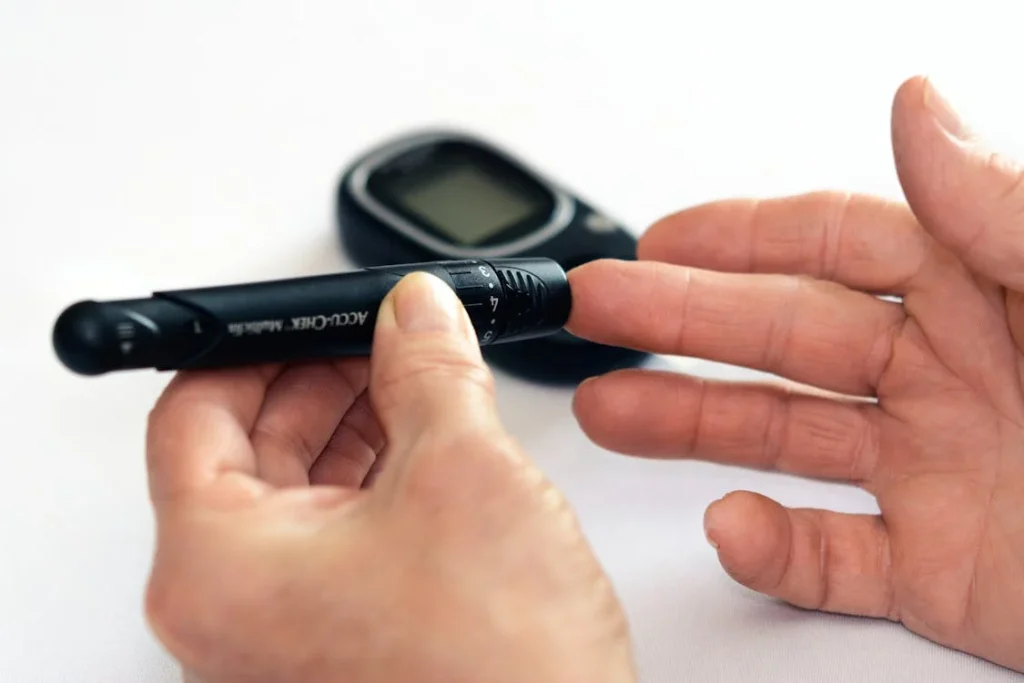
Daily Care Tips for Amputees with Diabetes
Managing diabetes while living with limb loss requires extra attention to daily health routines. Since diabetes affects circulation, nerve function, and wound healing, even small injuries can become serious if left untreated.
Taking proactive steps to care for the residual limb, skin, and overall health helps prevent complications and ensures a more comfortable experience when using a prosthetic limb.
Keeping the Residual Limb Healthy
The skin on the residual limb is more prone to irritation and pressure sores, especially for those using a prosthetic. Diabetes can slow down healing, making it important to check the skin daily for any signs of redness, blisters, or cuts.
If a sore develops, it should be cleaned immediately and monitored for any signs of infection.
Washing the residual limb with mild soap and warm water every day helps remove sweat and bacteria, reducing the risk of skin problems.
Drying the skin thoroughly, especially in areas where the prosthetic socket makes contact, prevents moisture buildup, which can lead to infections.
Using a gentle, fragrance-free moisturizer can help prevent dry skin but should be avoided in areas where the prosthetic attaches to maintain a secure fit.
Managing Blood Sugar for Better Healing
Stable blood sugar levels are essential for keeping the skin healthy and preventing infections. High blood sugar weakens the immune system, making it harder for the body to fight off bacteria.
If an irritation or wound appears on the residual limb, uncontrolled blood sugar can slow down the healing process, increasing the risk of serious complications.
Eating balanced meals with fiber, protein, and healthy fats throughout the day helps keep blood sugar stable. Avoiding sugary drinks and processed foods also reduces blood sugar spikes, supporting overall skin and wound healing.
Regular monitoring of blood sugar levels ensures that any changes can be addressed before they cause health issues.
Preventing Pressure Sores and Skin Irritation
Wearing a prosthetic limb for long hours can put pressure on the residual limb, leading to sores and discomfort. Since diabetes can reduce sensation in the limbs, some people may not immediately notice when a sore is developing.
Checking the residual limb before and after wearing a prosthetic helps catch any early signs of irritation.
Ensuring that the prosthetic socket fits properly prevents unnecessary friction and pressure. Over time, weight fluctuations or muscle changes can affect the fit, so regular adjustments by a prosthetist are necessary.
Wearing clean, breathable prosthetic liners or socks also reduces skin irritation and helps absorb sweat.
Foot Care for Amputees with Diabetes
For those who have lost only one limb, protecting the remaining foot is just as important. Diabetes can cause nerve damage in the feet, increasing the risk of ulcers and infections.
Checking the foot daily for cuts, blisters, or swelling ensures that any issues are addressed before they worsen.
Wearing comfortable, supportive shoes that reduce pressure on the foot prevents sores and calluses. Keeping toenails trimmed and avoiding walking barefoot further reduces the risk of injuries.
Regular visits to a podiatrist can help monitor foot health and prevent complications that could lead to further amputation.
Staying Hydrated and Maintaining Skin Elasticity
Dehydration can make the skin dry and fragile, increasing the risk of cracks and irritation on the residual limb. Drinking plenty of water throughout the day keeps the skin flexible and healthy.
Foods with high water content, such as cucumbers, berries, and melons, also help maintain hydration levels.
Proper hydration supports circulation, allowing nutrients and oxygen to reach the skin and muscles more effectively. This helps reduce swelling in the residual limb, making it more comfortable to wear a prosthetic.
Herbal teas and coconut water can be good alternatives to sugary beverages that can cause blood sugar spikes.

Mental and Emotional Well-Being for Amputees with Diabetes
Managing both diabetes and limb loss is not just about physical health—mental and emotional well-being play a significant role in overall quality of life. Adjusting to life after an amputation can be overwhelming, and dealing with diabetes at the same time can add extra stress.
However, building a positive mindset, seeking support, and adopting healthy coping strategies can help amputees regain confidence and live fulfilling lives.
Coping with the Emotional Impact of Limb Loss
Losing a limb is a major life change, and it is natural to experience a range of emotions, from grief and frustration to anxiety and uncertainty.
Many amputees struggle with body image concerns, changes in independence, or the fear of not being able to do things they once enjoyed. These feelings are completely valid, but they do not have to define the future.
Talking to loved ones, joining a support group, or speaking with a mental health professional can provide encouragement and reassurance.
Connecting with others who have gone through similar experiences helps reduce feelings of isolation and offers practical advice on navigating daily life.
Setting small, achievable goals—such as walking a little further each day or mastering a new activity with a prosthetic—builds confidence and motivation.
The Link Between Mental Health and Blood Sugar Levels
Stress and anxiety can have a direct impact on blood sugar control. When the body is under stress, it releases hormones that raise blood sugar levels, making it harder to manage diabetes effectively.
Long-term stress can also lead to emotional eating, poor sleep, and lack of motivation to stay active—all of which can worsen both diabetes and overall health.
Practicing relaxation techniques such as deep breathing, meditation, or gentle stretching can help reduce stress and improve emotional well-being.
Regular physical activity, even in small amounts, releases endorphins that naturally boost mood and reduce anxiety. Keeping a journal to track emotions, blood sugar levels, and progress can also help identify patterns and find better ways to manage stress.
Finding Purpose and Staying Engaged in Life
After an amputation, some people may feel unsure about their future or struggle to find a sense of purpose. It’s important to remember that life does not stop after limb loss—new opportunities and experiences are still possible.
Exploring hobbies, volunteering, or learning new skills can provide a sense of accomplishment and joy.
For some, getting involved in the amputee or diabetes community can be a meaningful way to give back and inspire others. Sharing personal experiences, offering support, or advocating for better healthcare access can help create a positive impact.
Small acts of engagement, like reconnecting with friends, joining a club, or setting personal fitness goals, make a big difference in mental well-being.
Building a Support System
No one should have to navigate diabetes and limb loss alone. Having a strong support system makes daily challenges easier to handle.
Whether it’s family, friends, healthcare providers, or support groups, surrounding oneself with encouraging people fosters resilience and motivation.
Regular visits with a doctor, prosthetist, and diabetes specialist ensure that both conditions are managed properly. A good relationship with healthcare professionals provides guidance, answers questions, and helps address any concerns before they turn into major problems.
Support also comes from everyday interactions. Having a trusted friend or family member to talk to, a workout partner to stay active with, or a peer who understands the journey can provide the emotional strength needed to push forward.
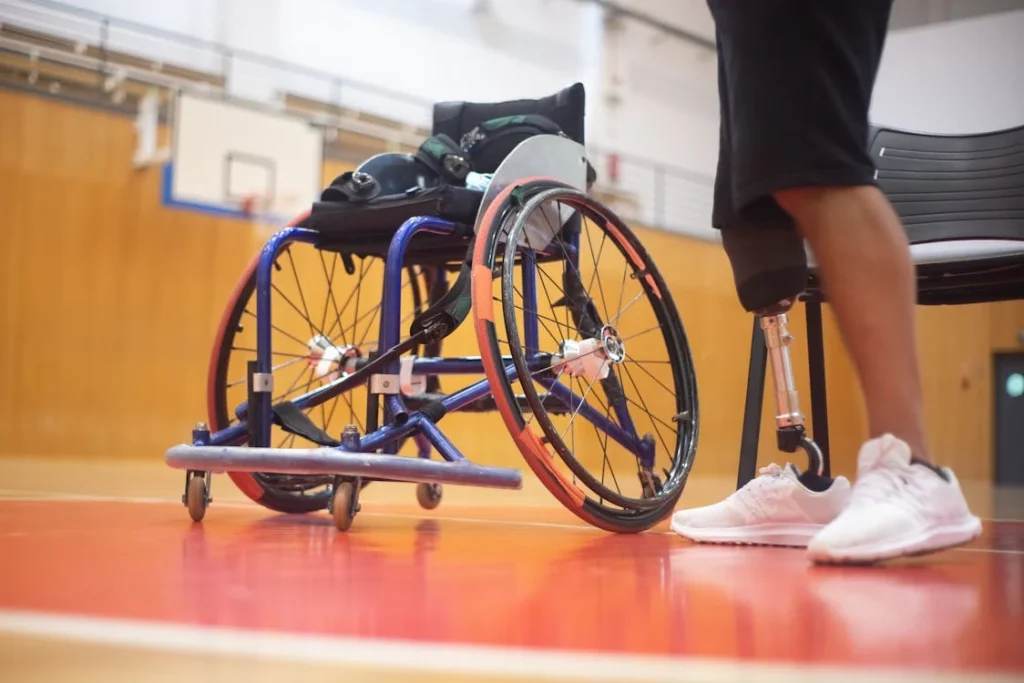
Adapting to a Healthy Lifestyle for Long-Term Success
Managing diabetes and living with limb loss is not just about short-term adjustments—it’s about building lifelong habits that support overall health, mobility, and well-being.
Small, consistent changes in daily routines can lead to major improvements in blood sugar control, prosthetic comfort, and overall energy levels. A sustainable approach to nutrition, exercise, and self-care helps amputees feel stronger and more confident in their daily lives.
Creating a Sustainable Meal Plan
A healthy diet should be practical and enjoyable. Instead of following restrictive diets, focusing on balanced meals with whole, unprocessed foods makes it easier to maintain blood sugar levels and support overall health.
Meal prepping in advance helps avoid unhealthy food choices, making it easier to stick to nutritious meals throughout the week.
It’s also important to find healthy alternatives to favorite foods. For example, swapping white rice for brown rice or whole grains, choosing unsweetened yogurt instead of flavored varieties, and using natural sweeteners like cinnamon instead of sugar can make a big difference without sacrificing taste.
Eating mindfully—chewing slowly, avoiding distractions, and stopping when full—also helps prevent overeating and blood sugar spikes.
Developing an Exercise Routine That Works
Exercise should be a regular part of life, but it should also be enjoyable and sustainable. Finding activities that fit into daily routines, such as stretching in the morning, walking in the evening, or doing simple strength exercises at home, makes it easier to stay consistent.
Working with a physical therapist or trainer who understands both diabetes and prosthetic use can provide customized exercises that improve strength and balance.
Listening to the body is key. Some days will feel easier than others, but even light movement is better than none. Rest and recovery are just as important, ensuring muscles and joints stay healthy and reducing the risk of injuries.
Staying active doesn’t have to mean intense workouts—it can be as simple as dancing, gardening, or playing a sport that feels comfortable.
Maintaining a Healthy Weight for Better Mobility
Weight management is especially important for amputees with diabetes, as excess weight can put strain on the residual limb and increase the risk of complications.
Carrying extra weight affects balance, puts pressure on the prosthetic socket, and can lead to joint pain. At the same time, being underweight can lead to muscle loss, making it harder to maintain strength and stability.
Finding a healthy balance through proper nutrition and regular movement helps maintain an ideal weight. Avoiding extreme diets or rapid weight loss methods is crucial, as these can lead to muscle weakness and fatigue.
Instead, focusing on gradual, sustainable changes ensures that the body gets the right nutrients while staying strong and active.
Tracking Progress and Celebrating Small Wins
Living with diabetes and limb loss requires ongoing effort, but tracking progress can be motivating. Keeping a journal or using an app to monitor blood sugar levels, energy levels, and mobility improvements can provide insight into what works best.
Regular check-ins with healthcare providers help ensure that any necessary adjustments are made in diet, exercise, or prosthetic fit.
Celebrating small achievements—whether it’s walking longer distances, maintaining stable blood sugar for a week, or simply feeling more confident—keeps motivation high. Every step toward better health is a victory, and recognizing progress helps maintain a positive outlook.
Conclusion
Managing diabetes while living with limb loss requires dedication, but with the right approach, it is possible to lead a strong, active, and fulfilling life. Proper nutrition, regular exercise, and mindful self-care all play a role in maintaining stable blood sugar levels, preventing complications, and ensuring comfort while using a prosthetic limb. Small, consistent habits—like choosing nutrient-rich foods, staying hydrated, and keeping the residual limb healthy—make a significant difference over time.
Beyond physical health, emotional well-being is just as important. Building a strong support system, staying engaged in enjoyable activities, and celebrating small victories help create a positive mindset. Adjusting to life with a prosthetic limb takes time, but every step forward is progress.
With a balanced approach to health and lifestyle, amputees with diabetes can regain confidence, improve mobility, and reduce the risk of further complications. By focusing on long-term well-being, it becomes easier to maintain an independent and fulfilling life. Taking control of health today ensures a stronger, healthier future.



